Posted
17 February, 2016
by Mandy
In California this week, state legislators introduced legislation that would require the California Coastal Commission to “disclose the use and payment of professional lobbyists.”[1] The intent of the bill is to ensure that the agency’s relationships with interest groups are transparent to the public: this means that the 44-year old coastal agency would be subject to the same reporting requirements of government agencies.[2]
Assemblyman Mark Stone, a co-author of the bill, stated that the influence of “certain lobbyists” on the...
Continue reading
Posted
10 February, 2016
by Mandy
The Japanese industrial and engineering firm, Hitachi Zosen Corp., has designed a desalination system that uses heat from waste incineration.[1] Hitachi Zosen developed this desalination system with a view towards promoting its use in the Middle East. The system desalinates water through reverse osmosis and distillation. The burned waste enables the production of water, either by turning a turbine to generate electricity for the reverse osmosis process; or, by directly providing heat for a distillation process. ...
Continue reading
Posted
03 February, 2016
by Mandy
The government of the dual-island nation of Saint Kitts and Nevis may use seawater desalination to offset water shortages. The Caribbean nation’s Minister of Public Infrastructure, Ian Liburd, has revealed that the government may reactivate an existing reverse osmosis desalination plant at La Valle. Liburd indicated the government is examining the cost of relocating the La Valle plant to a more suitable location in the Basseterre area; and it is also discussing the use of mobile reverse osmosis plants.[1]
The Indian...
Continue reading
Posted
27 January, 2016
by Mandy
India’s Brihanmumbai Municipal Corporation (BMC) in Mumbai has rejected a proposal to create desalination plants to deal with the city’s water crisis. BMC has explained that steep costs and a lack of land prohibited such a venture.[1] The BMC arrived at its decision after it appointed a committee to examine measures for setting up desalination plants in Mumbai. The committee recommended the installation of two pilot plants of 100 million litres daily capacity each, one for the city, and another for suburbs and metropolitan...
Continue reading
Posted
20 January, 2016
by Mandy
The Sustainable Energy Fund for Africa (SEFA) has granted Cape Verde a $930,000 (USD) grant to develop the “world’s first wave-driven desalination system.”[1] SEFA is a multi-donor trust fund that is rooted in a $60 million (USD) grant made by Denmark and the United States—to support renewable and efficient energy projects in Africa.[2] The plant, located in Praia Grande, Cape Verde, will operate off the grid, supplying up to 4,000 cubic metres of water a day to more than 48,000 people.[3] Resolute Marine Energy (RME) Cape...
Continue reading
Posted
06 January, 2016
by Mandy
This week, the renovated Broken Hill Desalination Plant in New South Wales, Australia will resume operations. The plant has been undergoing a capacity increase and equipment upgrades that will enable the use of high-recovery reverse osmosis technology.[1] Meanwhile, by early next week, the city of Broken Hill will no longer draw water from Copi Hollow. Instead, it will rely on Weir 32 at Menindee Lakes.[2] The shallow, freshwater Menindee Lakes is the main water source for residents of the city as well as New...
Continue reading
Posted
16 December, 2015
by Mandy
Pathbreaking climate talks in Paris inspired the creation of the Global Clean Water Desalination Alliance – H20 minus CO2. The alliance includes more than 80 signatories in government and the public and private sectors from around the world—including Australia, Belgium, China, France, Germany, Greece, India, Italy, the Netherlands, Japan, Singapore, South Korea, the U.K., and the U.S.
By 2040, the alliance seeks to reduce approximately 270 tonnes of carbon dioxide emissions per year from desalination plants.[1] ...
Continue reading
Posted
09 December, 2015
by Mandy
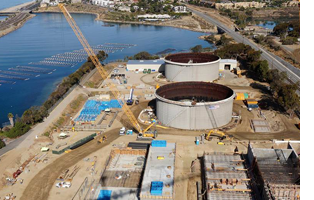 This Monday, December 14, a ceremony will celebrate the completion of California’s $1 billion (USD) Carlsbad Desalination Plant—the largest seawater desalter in the Western Hemisphere[1]. The plant will deliver potable water to customers through a ten-mile, large diameter pipeline. According to the 30-year Water Purchase Agreement between Poseidon Water and the San Diego County Water Authority, the latter will purchase between 59,210,000 and 69,070,000 cubic metres of water per year (serving 400,000 people, or about 8 percent of the region’s water demand)[2].
This Monday, December 14, a ceremony will celebrate the completion of California’s $1 billion (USD) Carlsbad Desalination Plant—the largest seawater desalter in the Western Hemisphere[1]. The plant will deliver potable water to customers through a ten-mile, large diameter pipeline. According to the 30-year Water Purchase Agreement between Poseidon Water and the San Diego County Water Authority, the latter will purchase between 59,210,000 and 69,070,000 cubic metres of water per year (serving 400,000 people, or about 8 percent of the region’s water demand)[2].
The Carlsbad Desalination Facility while under construction, San Diego, California Credit: NBC News
Continue reading
Posted
02 December, 2015
by Mandy
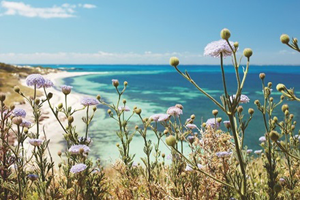 On the shores of Rottnest Island in Western Australia, solar energy will soon help to power an existing desalination facility that is undergoing major upgrades. [1] In the spring of 2017, the Rottnest Island Water and Renewable Energy Nexus Project (WREN) will realize its objective to deliver electricity and drinking water for the island at a lower cost and with reduced emissions—by using renewable energy and displacing existing diesel-powered generators. [2] The WREN Project will add 600 kW of solar power to an existing 600 kW wind turbine that was installed in 2004. It will also implement a smart control system that will maximise the use of solar and wind energy when it is most abundant, and store treated water for times when renewable energy is not available. [3]
On the shores of Rottnest Island in Western Australia, solar energy will soon help to power an existing desalination facility that is undergoing major upgrades. [1] In the spring of 2017, the Rottnest Island Water and Renewable Energy Nexus Project (WREN) will realize its objective to deliver electricity and drinking water for the island at a lower cost and with reduced emissions—by using renewable energy and displacing existing diesel-powered generators. [2] The WREN Project will add 600 kW of solar power to an existing 600 kW wind turbine that was installed in 2004. It will also implement a smart control system that will maximise the use of solar and wind energy when it is most abundant, and store treated water for times when renewable energy is not available. [3]
The Rottnest Island Daisy
Continue reading
Posted
26 November, 2015
by Mandy
 The national water agency of Singapore, the Public Utility Board (PUB), has selected the civil engineering company HSL Constructor to design and construct the nation’s third desalination facility. HSL Constructor bid $153 million (USD) for the plant, which will be located in Tuas. The plant will operate at a capacity of 136,000 cubic metres per day, the same as the nation’s first facility, which is less than half of the production capacity of the second plant at Tuaspring (which is over 300,000 cubic metres per day). Construction will begin in 2017.
The national water agency of Singapore, the Public Utility Board (PUB), has selected the civil engineering company HSL Constructor to design and construct the nation’s third desalination facility. HSL Constructor bid $153 million (USD) for the plant, which will be located in Tuas. The plant will operate at a capacity of 136,000 cubic metres per day, the same as the nation’s first facility, which is less than half of the production capacity of the second plant at Tuaspring (which is over 300,000 cubic metres per day). Construction will begin in 2017.
Continue reading
Posted
18 November, 2015
by Mandy

Early this week in Australia’s state of Victoria, Premier Daniel Andrews’ Labour government announced a $27 million package of measures to reallocate water resources and alleviate drought.
The main proposed project to improve Victoria’s water supply will be the creation of 40 kilometres of trunk pipelines and four new pumps, which will be installed at Woosang, Korong, Vale, and Wychitella.
Wheat farmer Leon Hogan on his property, where his harvest is down 80 percent from last year | Credit: Justin McManus
Continue reading
Posted
11 November, 2015
by Mandy
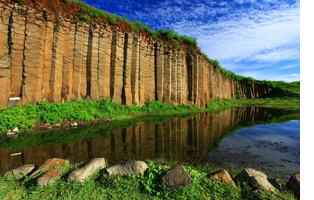 In Penghu County, Taiwan, the “the Canary Islands of the Orient,” a local official has requested that the central government expand the capacity of a desalination plant that is scheduled to open in 2018. Last week, Penghu County Magistrate, Chen Kuang-fu, made his appeal during a meeting with the deputy head of the country’s Water Resources Agency. Chen requested an increase of 6,000 cubic metres per day, as opposed to the scheduled 4,000 cubic metres a day.
In Penghu County, Taiwan, the “the Canary Islands of the Orient,” a local official has requested that the central government expand the capacity of a desalination plant that is scheduled to open in 2018. Last week, Penghu County Magistrate, Chen Kuang-fu, made his appeal during a meeting with the deputy head of the country’s Water Resources Agency. Chen requested an increase of 6,000 cubic metres per day, as opposed to the scheduled 4,000 cubic metres a day.
Penghu County includes almost 100 islands formed from lava of volcanic eruptions roughly 17 million years ago. A quarter of these islands are inhabited, and renowned for their breath-taking, geologically distinct cliffs and beaches, magnificent ocean views, celebrated temples, and traditional Chinese-style homes surrounded by coral walls.
Basalt columns on the Penghu Islands | Credit: Medical Travel
Continue reading
Posted
04 November, 2015
by Mandy
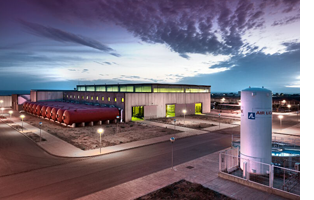
In the Middle East, the intergovernmental political and economic union known as the Gulf Cooperation Council (GCC) is set to increase its desalination capacity by 40% within the next five years, in order to meet the region’s growing demand for drinking water. GCC member states—Bahrain, Kuwait, Oman, Qatar, Saudi Arabia, and the United Arab Emirates—currently use around 3,300 million Imperial gallons of potable per day (MIGD; 15 million m³/d) and this number is expected to increase to 5,200 MIGD by 2020 (23 million m³/d).
According to data produced by MEED Projects (a Middle East and North Africa projects tracker): “While reserve margins between supply and demand appear to be at comfortable levels, at country and local network levels the supply-demand gaps are much smaller.”
Desalination plant in Almeria, Spain Credit: Abengoa Press Room
Continue reading
Posted
28 October, 2015
by Mandy
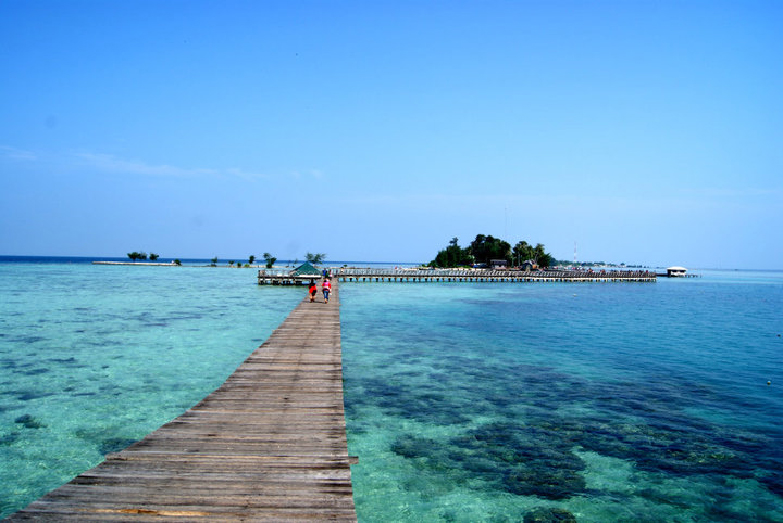 In Jakarta, the Indonesian megalopolis of Java, city officials are planning to develop five seawater desalination projects in the Thousand Island archipelago that is just north of the city. The Thousand Islands, also known as Kepulauan Seribu, consists of a string of 128 small islands in the Jakarta Bay, which are surrounded by clear, calm waters and white-sand beaches. Of these islands, 13 are fully developed for public use, and among them, Karya, Kelapa, Harapan, Tidung, and Untung Jawa will become home to new plants.1 The construction will be completed by next year.
In Jakarta, the Indonesian megalopolis of Java, city officials are planning to develop five seawater desalination projects in the Thousand Island archipelago that is just north of the city. The Thousand Islands, also known as Kepulauan Seribu, consists of a string of 128 small islands in the Jakarta Bay, which are surrounded by clear, calm waters and white-sand beaches. Of these islands, 13 are fully developed for public use, and among them, Karya, Kelapa, Harapan, Tidung, and Untung Jawa will become home to new plants.1 The construction will be completed by next year.
Continue reading
Posted
21 October, 2015
by Mandy
 Scientists at the Leibniz Institute for New Materials (INM) in Saarbrücken, Germany are further developing an emerging desalination method. The process, referred to as capacitive deionization (CDI), extracts ions from water using electrodes, generating clean water and ions that have been enriched on the electrodes. This process removes salts and heavy metals and, uniquely, it does not use conventional water treatment methods that rely on chemical reactions or sophisticated filtering methods.
Scientists at the Leibniz Institute for New Materials (INM) in Saarbrücken, Germany are further developing an emerging desalination method. The process, referred to as capacitive deionization (CDI), extracts ions from water using electrodes, generating clean water and ions that have been enriched on the electrodes. This process removes salts and heavy metals and, uniquely, it does not use conventional water treatment methods that rely on chemical reactions or sophisticated filtering methods.
In addition to desalination, Professor Volker Presser, head of the Energy Materials Group at INM, explains that emissions from power plants can be used to produce electricity using CDI—as long as the emissions are present (i.e. dissolved) in the water as ions— by taking advantage of the temperature change between the charge and discharge of the electrodes.
Nanoporous carbon materials in capacitive deionization| Credit: Uwe Bellhäuser /Volker Presser (INM)
Continue reading
Posted
14 October, 2015
by Mandy
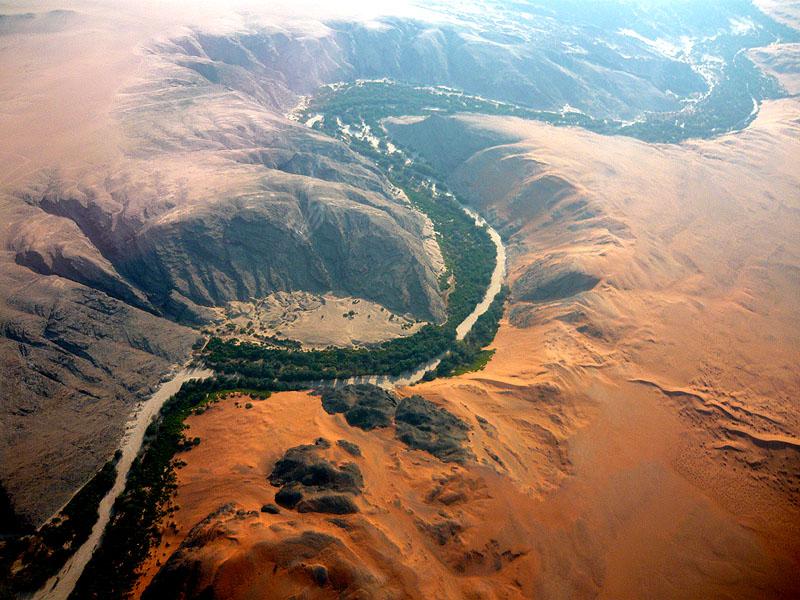
The Namibian government has made progress towards finalising a deal to purchase the country’s sole desalination plant.1 Since September 2014, a Cabinet-appointed government negotiating team has been working with the privately-held company, Areva Resources, to purchase the plant, located in the Erongo region, 30km from the capital, Swakopmund. The Omdel water-supply system and the Kuiseb River have long supported the region’s coastal towns and businesses, however, their volumes have been diminishing over the years. In 2009, water shortages stopped the Erongo region’s uranium mining production for the first time.
The Areva plant currently supplies water exclusively to the Husab and Rössing mines; and will continue to support these mines after officials finalise its purchase. Sugnet Smith, of Areva Resources Namibia, has reported that the company is not able to reveal the plant’s purchase price prior to the conclusion of negotiations. Assuming the sale concludes smoothly, the Namibia Water Corporation (NamWater), owned by the government’s Ministry of Agriculture, will soon assume responsibility for distributing at least 11 million cubic metres of water annually; however, the plant is capable of producing 20 million cubic metres.3
Namibia’s Kuiseb River, an ephemeral river with a run-off of 20 million m3/year Credit: African Seer
Continue reading
Posted
07 October, 2015
by Mandy
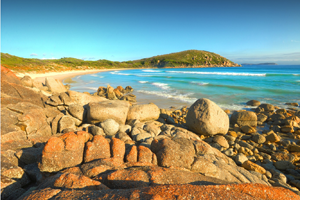 In Australia, officials are developing a water plan that will possibly restart Victoria’s $4 billion seawater desalination plant. Located on the continent’s southeastern coast, Victoria’s mainland (230,000 square kilometres) is defined by rugged coastline and vast expanses of ancient and protected forests. A lack of rainfall since July 2014 has brought the ravages of drought to the terrain, parching vast expanses of land (in the north and the west) and diminishing water storage levels. Parts of western and south-eastern South Australia have received the lowest rainfall on record; and by December, several rivers in Victoria will stop flowing altogether.
In Australia, officials are developing a water plan that will possibly restart Victoria’s $4 billion seawater desalination plant. Located on the continent’s southeastern coast, Victoria’s mainland (230,000 square kilometres) is defined by rugged coastline and vast expanses of ancient and protected forests. A lack of rainfall since July 2014 has brought the ravages of drought to the terrain, parching vast expanses of land (in the north and the west) and diminishing water storage levels. Parts of western and south-eastern South Australia have received the lowest rainfall on record; and by December, several rivers in Victoria will stop flowing altogether.
South Gippsland Hills, Victoria / Credit: Ian Rolfe Photography
Continue reading
Posted
30 September, 2015
by Mandy
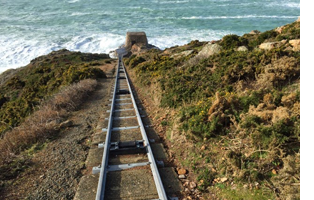 The U.K.’s first desalination plant, La Rosière in Jersey, is undergoing major upgrades. ACWA services Ltd, which is part of a leading water and wastewater corporation, will nearly double the plant’s capacity, reduce operational costs, and implement security measures for periods of low rainfall. The turnkey solution will include the redesign and expansion of the existing seawater and reverse osmosis process streams, a new dual media filter, next generation reverse osmosis membranes, pre-treatment systems and related equipment. Once the plant is operational, it will produce 10,800 cubic metres of water a day, with the capacity to produce 15,000 cubic metres of water daily (upon future expansion).
The U.K.’s first desalination plant, La Rosière in Jersey, is undergoing major upgrades. ACWA services Ltd, which is part of a leading water and wastewater corporation, will nearly double the plant’s capacity, reduce operational costs, and implement security measures for periods of low rainfall. The turnkey solution will include the redesign and expansion of the existing seawater and reverse osmosis process streams, a new dual media filter, next generation reverse osmosis membranes, pre-treatment systems and related equipment. Once the plant is operational, it will produce 10,800 cubic metres of water a day, with the capacity to produce 15,000 cubic metres of water daily (upon future expansion).
New rail lines in Jersey, near the La Rosière plant, close to Corbiere | Credit: Kevin Mansell
Continue reading
Posted
23 September, 2015
by Mandy
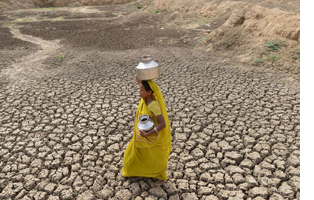
In the water-starved city of Chennai, India, the Tamil Nadu state government is setting up a third desalination plant. Located in Nemelli, the plant will use reverse osmosis to produce 150 million litres of water a day—contributing to Chennai Metrowater’s current distribution of 550 million litres of water to the region on alternate days [1] The German development bank, KfW, is financing the plant’s construction, and a team from the bank will soon visit Chennai to finalize details. It is expected that the project will take 30 months to complete after the construction contract has been awarded.
In Horizon City, Texas, STW Resources has completed improvements on the Horizon City Municipal Utility District plant. The facility, which now uses a reverse osmosis concentrator...
Credit: Sam Panthaky/AFP/Getty Images
Continue reading
Posted
09 September, 2015
by Mandy

Singapore’s five million inhabitants currently consume an average of 1.5 million cubic metres of water a day. To meet the needs of a growing population, the island-nation’s Public Utilities Board (PUB), the national water agency, has announced plans to build a fourth desalination plant. The plant will produce 136,400 cubic metres of water daily. Reports suggest that the plant will be located near water stressed zones.
Apart from desalination, Singapore’s PUB draws freshwater from three other sources—local catchment areas, imported water, and reclaimed water. PUB has also created a water conservation programme that targets the private and public sectors. Since 2003, per capita domestic water consumption has fallen from 165 litres per day to 150 litres, and further reductions aim for an average of 140 litres by 2030.
Continue reading
Posted
02 September, 2015
by Mandy
 In San Diego, during California’s crippling drought, the International Desalination Association has kicked off its 2015 World Congress. The event is focused on desalination and water reuse, and brings together delegates from across the world every two years. In the words of the IDA Secretary General, Patricia Burke, the purpose of the event is “to address the growing demand for a sustainable source of fresh water in response to population growth, economic expansion, degradation of existing resources, and the effects of climate change.” The location is fitting, as San Diego is home to the nearly finished Carlsbad Desalination Plant—the largest in the Western hemisphere.
In San Diego, during California’s crippling drought, the International Desalination Association has kicked off its 2015 World Congress. The event is focused on desalination and water reuse, and brings together delegates from across the world every two years. In the words of the IDA Secretary General, Patricia Burke, the purpose of the event is “to address the growing demand for a sustainable source of fresh water in response to population growth, economic expansion, degradation of existing resources, and the effects of climate change.” The location is fitting, as San Diego is home to the nearly finished Carlsbad Desalination Plant—the largest in the Western hemisphere.
Continue reading
Posted
26 August, 2015
by Mandy
 For the first time since 2013, the U.S. entered “National Preparedness Level 5”—a term that signifies “all agency fire resources” across the country are nearly exhausted and struggling to fight fires. At present, vast infernos are raging across Northern California and the Northwest. The severe drought and heat across the region is creating one of the worst “wildfire summers” on record. Last week, fire officials reported the situation could worsen “with a new round of wind and heat.” The New York Times reports that more acres have burned this year so far – 7.2 million as of last week – than in each of the previous 10 years. Alaska has suffered the great majority of these conflagrations, but California is currently dealing with the worst of them.
For the first time since 2013, the U.S. entered “National Preparedness Level 5”—a term that signifies “all agency fire resources” across the country are nearly exhausted and struggling to fight fires. At present, vast infernos are raging across Northern California and the Northwest. The severe drought and heat across the region is creating one of the worst “wildfire summers” on record. Last week, fire officials reported the situation could worsen “with a new round of wind and heat.” The New York Times reports that more acres have burned this year so far – 7.2 million as of last week – than in each of the previous 10 years. Alaska has suffered the great majority of these conflagrations, but California is currently dealing with the worst of them.
Continue reading
Posted
19 August, 2015
by Mandy
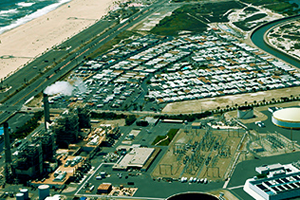 In California, the revised ‘Ocean Plan’ requires desalination plants to use subsurface ocean intake systems unless a study determines it to be infeasible. For the proposed desalination facility at Huntington Beach, a report has concluded that a subsurface ocean intake is financially infeasible. The report, completed by an Independent Scientific and Technical Advisory Panel (ISTAP), was jointly commissioned by Poseidon Resources and the California Coastal Commission. The report calculates an estimated cost of $1,000 (USD) extra per acre-foot of desalinated water for a subsurface intake, which brings the total cost to approximately $2,661 (an open-ocean intake would cost a total of $1,639 per acre-foot). Construction for the subsurface intake would also take five to seven years longer than an open-ocean intake.
In California, the revised ‘Ocean Plan’ requires desalination plants to use subsurface ocean intake systems unless a study determines it to be infeasible. For the proposed desalination facility at Huntington Beach, a report has concluded that a subsurface ocean intake is financially infeasible. The report, completed by an Independent Scientific and Technical Advisory Panel (ISTAP), was jointly commissioned by Poseidon Resources and the California Coastal Commission. The report calculates an estimated cost of $1,000 (USD) extra per acre-foot of desalinated water for a subsurface intake, which brings the total cost to approximately $2,661 (an open-ocean intake would cost a total of $1,639 per acre-foot). Construction for the subsurface intake would also take five to seven years longer than an open-ocean intake.
Continue reading
Posted
15 August, 2015
by Mandy
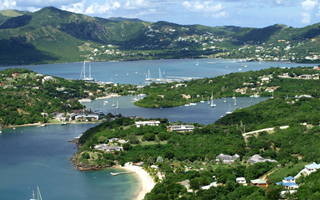 In the West Indies, the twin island state of Antigua and Barbuda has depleted its reservoirs. While water rationing has been in place for more than a year, the country’s 90,000 inhabitants are now entirely dependent on desalination plants, surface water, and ground water. Water management is reported as the nation’s principal environmental concern. Droughts occur in the tropical nation every five to ten years—and in 1983-1984, authorities had to import water from other countries to make up for the deficit.
In the West Indies, the twin island state of Antigua and Barbuda has depleted its reservoirs. While water rationing has been in place for more than a year, the country’s 90,000 inhabitants are now entirely dependent on desalination plants, surface water, and ground water. Water management is reported as the nation’s principal environmental concern. Droughts occur in the tropical nation every five to ten years—and in 1983-1984, authorities had to import water from other countries to make up for the deficit.
“Antigua Builds New Desalination Plant as Reservoirs Run Dry,” Latin American Herald Tribune, <http://www.laht.com/article.asp?ArticleId=2394370&CategoryId=14092> accessed August 14, 2015.
Continue reading








 This Monday, December 14, a ceremony will celebrate the completion of California’s $1 billion (USD) Carlsbad Desalination Plant—the largest seawater desalter in the Western Hemisphere[1]. The plant will deliver potable water to customers through a ten-mile, large diameter pipeline. According to the 30-year Water Purchase Agreement between Poseidon Water and the San Diego County Water Authority, the latter will purchase between 59,210,000 and 69,070,000 cubic metres of water per year (serving 400,000 people, or about 8 percent of the region’s water demand)[2].
This Monday, December 14, a ceremony will celebrate the completion of California’s $1 billion (USD) Carlsbad Desalination Plant—the largest seawater desalter in the Western Hemisphere[1]. The plant will deliver potable water to customers through a ten-mile, large diameter pipeline. According to the 30-year Water Purchase Agreement between Poseidon Water and the San Diego County Water Authority, the latter will purchase between 59,210,000 and 69,070,000 cubic metres of water per year (serving 400,000 people, or about 8 percent of the region’s water demand)[2].


 In Penghu County, Taiwan, the “the Canary Islands of the Orient,” a local official has requested that the central government expand the capacity of a desalination plant that is scheduled to open in 2018. Last week, Penghu County Magistrate, Chen Kuang-fu, made his appeal during a meeting with the deputy head of the country’s Water Resources Agency.
In Penghu County, Taiwan, the “the Canary Islands of the Orient,” a local official has requested that the central government expand the capacity of a desalination plant that is scheduled to open in 2018. Last week, Penghu County Magistrate, Chen Kuang-fu, made his appeal during a meeting with the deputy head of the country’s Water Resources Agency.
 In Jakarta, the Indonesian megalopolis of Java, city officials are planning to develop five seawater desalination projects in the Thousand Island archipelago that is just north of the city. The Thousand Islands, also known as Kepulauan Seribu, consists of a string of 128 small islands in the Jakarta Bay, which are surrounded by clear, calm waters and white-sand beaches. Of these islands, 13 are fully developed for public use, and among them, Karya, Kelapa, Harapan, Tidung, and Untung Jawa will become home to new plants.
In Jakarta, the Indonesian megalopolis of Java, city officials are planning to develop five seawater desalination projects in the Thousand Island archipelago that is just north of the city. The Thousand Islands, also known as Kepulauan Seribu, consists of a string of 128 small islands in the Jakarta Bay, which are surrounded by clear, calm waters and white-sand beaches. Of these islands, 13 are fully developed for public use, and among them, Karya, Kelapa, Harapan, Tidung, and Untung Jawa will become home to new plants. Scientists at the Leibniz Institute for New Materials (INM) in Saarbrücken, Germany are further developing an emerging desalination method. The process, referred to as capacitive deionization (CDI), extracts ions from water using electrodes, generating clean water and ions that have been enriched on the electrodes.
Scientists at the Leibniz Institute for New Materials (INM) in Saarbrücken, Germany are further developing an emerging desalination method. The process, referred to as capacitive deionization (CDI), extracts ions from water using electrodes, generating clean water and ions that have been enriched on the electrodes.

 The U.K.’s first desalination plant, La Rosière in Jersey, is undergoing major upgrades. ACWA services Ltd, which is part of a leading water and wastewater corporation, will nearly double the plant’s capacity, reduce operational costs, and implement security measures for periods of low rainfall. The turnkey solution will include the redesign and expansion of the existing seawater and reverse osmosis process streams, a new dual media filter, next generation reverse osmosis membranes, pre-treatment systems and related equipment. Once the plant is operational, it will produce 10,800 cubic metres of water a day, with the capacity to produce 15,000 cubic metres of water daily (upon future expansion).
The U.K.’s first desalination plant, La Rosière in Jersey, is undergoing major upgrades. ACWA services Ltd, which is part of a leading water and wastewater corporation, will nearly double the plant’s capacity, reduce operational costs, and implement security measures for periods of low rainfall. The turnkey solution will include the redesign and expansion of the existing seawater and reverse osmosis process streams, a new dual media filter, next generation reverse osmosis membranes, pre-treatment systems and related equipment. Once the plant is operational, it will produce 10,800 cubic metres of water a day, with the capacity to produce 15,000 cubic metres of water daily (upon future expansion).

 In San Diego, during California’s crippling drought, the International Desalination Association has kicked off its 2015 World Congress. The event is focused on desalination and water reuse, and brings together delegates from across the world every two years. In the words of the IDA Secretary General, Patricia Burke, the purpose of the event is “to address the growing demand for a sustainable source of fresh water in response to population growth, economic expansion, degradation of existing resources, and the effects of climate change.”
In San Diego, during California’s crippling drought, the International Desalination Association has kicked off its 2015 World Congress. The event is focused on desalination and water reuse, and brings together delegates from across the world every two years. In the words of the IDA Secretary General, Patricia Burke, the purpose of the event is “to address the growing demand for a sustainable source of fresh water in response to population growth, economic expansion, degradation of existing resources, and the effects of climate change.”
 In California, the revised ‘Ocean Plan’ requires desalination plants to use subsurface ocean intake systems unless a study determines it to be infeasible.
In California, the revised ‘Ocean Plan’ requires desalination plants to use subsurface ocean intake systems unless a study determines it to be infeasible. In the West Indies, the twin island state of Antigua and Barbuda has depleted its reservoirs. While water rationing has been in place for more than a year, the country’s 90,000 inhabitants are now entirely dependent on desalination plants, surface water, and ground water.
In the West Indies, the twin island state of Antigua and Barbuda has depleted its reservoirs. While water rationing has been in place for more than a year, the country’s 90,000 inhabitants are now entirely dependent on desalination plants, surface water, and ground water.